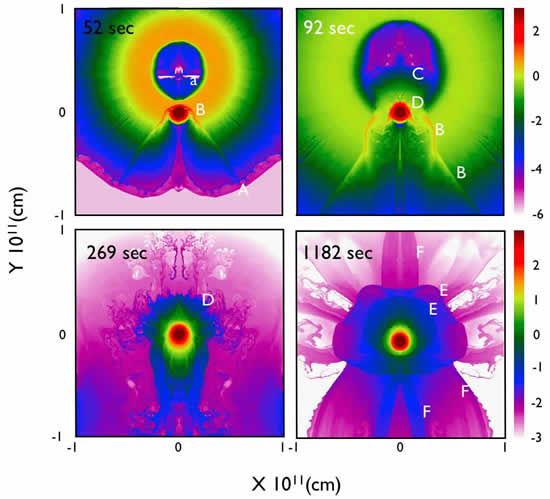Research Gallery > Computational Astrophysics (CompAS)
Research Gallery
Computational Astrophysics (CompAS)
| Impact of Type Ia Supernova Ejecta on a Helium Star Binary Companion |
|
Image Credit: Pan, Ricker, and Taam

Observations of SNIa rates as a function of redshift suggest the existence of a short delay time population of 100 Myr and a long delay time population of 3-4 Gyr.
|
| The progenitors of Type Ia supernovae are generally believed to be binary star systems involving a white dwarf star although its exact nature is unclear (either a double degenerate or a single degenerate). Observations of SNIa rates as a function of redshift suggest the existence of a short delay time population of 100 Myr and a long delay time population of 3-4 Gyr. We have examined the short delay population involving the helium star - white dwarf evolutionary channel. Specifically, the effect of the impact of supernova ejecta on its helium companion star has been studied. In comparison with impacts on hydrogen rich stars less mass is lost from the companion, but the remnant star acquires a higher space motion. In the accompanying figure, the density distribution of the ejecta and helium star is shown at various evolutionary times. The two dimensional hydrodynamic simulations reveal the appearance of forward and reverse shock structures resulting in the loss of mass via stripping and ablation processes. (Pan, Ricker, and Taam, 2010, ApJ, 715, 78) |
 asiaa.sinica.edu.tw Media Request: epo
asiaa.sinica.edu.tw Media Request: epo asiaa.sinica.edu.tw
asiaa.sinica.edu.tw 
